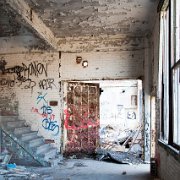
4 The Packard Automotive Plant is a former automobile-manufacturing factory in Detroit, Michigan where luxury Packard cars were made by the Packard Motor Car Company of Detroit, Michigan, and later by the Studebaker-Packard Corporation of South Bend, Indiana.
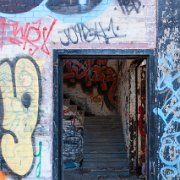
5 The Packard Automotive Plant is a former automobile-manufacturing factory in Detroit, Michigan where luxury Packard cars were made by the Packard Motor Car Company of Detroit, Michigan, and later by the Studebaker-Packard Corporation of South Bend, Indiana.
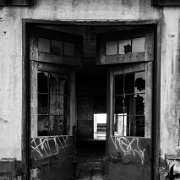
6 The Packard Automotive Plant is a former automobile-manufacturing factory in Detroit, Michigan where luxury Packard cars were made by the Packard Motor Car Company of Detroit, Michigan, and later by the Studebaker-Packard Corporation of South Bend, Indiana.
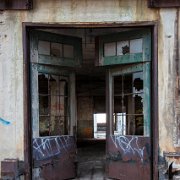
7 The Packard Automotive Plant is a former automobile-manufacturing factory in Detroit, Michigan where luxury Packard cars were made by the Packard Motor Car Company of Detroit, Michigan, and later by the Studebaker-Packard Corporation of South Bend, Indiana.
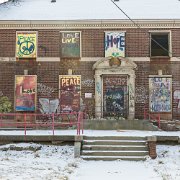
8 Kronk Gym was a boxing gym located in Detroit and led by legendary trainer Emanuel Steward. It was run out of the basement of the oldest recreation center of the City of Detroit, and became a household word in the sport of boxing and its gold shorts a magnet to young talent following the enormous success and high profile of multiple World Champion and Boxing Hall of Famer Thomas “The Hitman” Hearns in the 1980s.
The training facility opened shortly after World War I (~1920) and closed in 2006.
The training facility opened shortly after World War I (~1920) and closed in 2006.
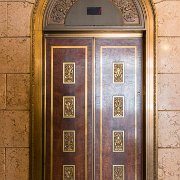
10 Upon its completion the Michigan Theater could seat 4,050 patrons, In addition to films in its prime years, the theatre hosted performances of bands led by John Philip Sousa, Benny Goodman, Jimmy Dorsey and Harry James as well as live performances by The Marx Brothers, Betty Grable and Bob Hope.[4]
The theater ceased operations in 1976 after operating as a nightclub named The Michigan Palace. The office tenants threatened to leave unless they received adequate parking. To retain the tenants, building owners gutted and converted the theater into a parking structure. The theater could not be completely demolished and replaced by a parking structure because it is integral to the structure of the office building. The ornate plaster ceiling of the theater auditorium and grand lobby, at the ninth floor level, are still intact, as are parts of the mezzanine, the 2nd and 3rd balcony foyers and their staircases. The projection booth is also still intact.
The theater ceased operations in 1976 after operating as a nightclub named The Michigan Palace. The office tenants threatened to leave unless they received adequate parking. To retain the tenants, building owners gutted and converted the theater into a parking structure. The theater could not be completely demolished and replaced by a parking structure because it is integral to the structure of the office building. The ornate plaster ceiling of the theater auditorium and grand lobby, at the ninth floor level, are still intact, as are parts of the mezzanine, the 2nd and 3rd balcony foyers and their staircases. The projection booth is also still intact.
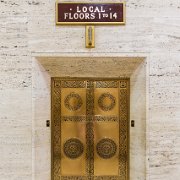
11 The Buhl Building is a skyscraper and class-A office center in downtown Detroit, Michigan. Architect Wirt C. Rowland designed the Buhl in a Neo-Gothic style with Romanesque accents. Constructed in 1925, it stands at 26 stories, in the Detroit Financial District across Congress Street from the Penobscot Building, and across Griswold Street from the Guardian Building, all of which were designed by Wirt C. Rowland. The Buhl Building stands on the corner of Congress St. West, and Griswold St. in Downtown Detroit. The building stands atop what used to be the Savoyard Creek near its confluence with the Detroit River. In 1836, the creek was covered and turned into a sewer. The Savoyard Club occupied the 27th floor of the Buhl Building from 1928 until its membership dwindled and the club closed in 1994.
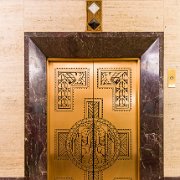
12 The Greater Penobscot Building, commonly known as the Penobscot Building, is a skyscraper and class-A office building in Downtown Detroit, Michigan. The architect Wirt C. Rowland, of the prominent Smith Hinchman & Grylls firm based in Detroit, designed the Penobscot in an elaborate Art Deco style in 1928. Clad in Indiana Limestone with a granite base, it rises like a sheer cliff for thirty stories, then has a series of setbacks culminating in a red neon beacon tower. Like many of the city's other Roaring Twenties buildings, it displays Art Deco influences, including its "H" shape (designed to allow maximum sunlight into the building) and the sculptural setbacks that cause the upper floors to progressively "erode"
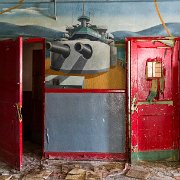
16 The Detroit Naval Armory is a limestone structure with four main sections: a vestibule, a drill hall, an office / penthouse section, and a company drill hall. The building mixes Art Moderne and Art Deco influences, and contains a large array of Depression-era WPA art by artists such as John Tabaczuk, Edgar Yaeger, David Fredenthal, and Gustave Hildebrand, all with nautical themes. The building faces East Jefferson; the entrance is heavily decorated in military and naval themes using Pewabic tiles. In front of the building is a semi-circular drive encircling a flagpole erected in 1943 and a large Navy anchor from the USS Yantic, a Civil War gunboat whose hull is buried in a filled-in boat slip in Gabriel Richard Park.
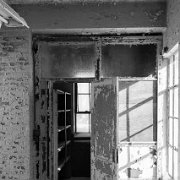
17 The Detroit Naval Armory is a limestone structure with four main sections: a vestibule, a drill hall, an office / penthouse section, and a company drill hall. The building mixes Art Moderne and Art Deco influences, and contains a large array of Depression-era WPA art by artists such as John Tabaczuk, Edgar Yaeger, David Fredenthal, and Gustave Hildebrand, all with nautical themes. The building faces East Jefferson; the entrance is heavily decorated in military and naval themes using Pewabic tiles. In front of the building is a semi-circular drive encircling a flagpole erected in 1943 and a large Navy anchor from the USS Yantic, a Civil War gunboat whose hull is buried in a filled-in boat slip in Gabriel Richard Park.
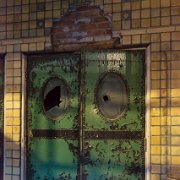
18 The 800-seat National Theater, built in 1911, is the only known theatre designed by Albert Kahn and the oldest surviving theatre from the city's original theatre district of the 19th century. It operated as a movie theater until the 1920s, when competition from larger movie houses forced a change to a vaudeville venue. The National survived as a burlesque and adult entertainment theater until it closed in the 1970s.
The front facade of the National is dominated by an enormous arch flanked with twin towers and covered with white and blue terra cotta tiles. The facade has hundreds of lightbulbs built in, which accentuate the architectural features when lit. The National Theater is an outstanding example of Modernistic design, boasting a pair of terra cotta latticework towers, arched art glass windows, and colored Pewabic tiles on the facade.
The front facade of the National is dominated by an enormous arch flanked with twin towers and covered with white and blue terra cotta tiles. The facade has hundreds of lightbulbs built in, which accentuate the architectural features when lit. The National Theater is an outstanding example of Modernistic design, boasting a pair of terra cotta latticework towers, arched art glass windows, and colored Pewabic tiles on the facade.
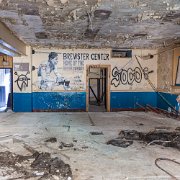
19 The Brewster Recreation Center was built in 1929 to serve the recreational needs of the city's expanding black population. The name was later changed in honor of Leon Wheeler, the first black worker in the Detroit Parks & Recreation department.
At some point in the 90's a basketball court was donated by former NBA star Chris Webber. Along with the surrounding Douglass projects, the center closed in the late 2000's.
A small fire broke out on the second floor of the rec center on July 30th, 2011.
At some point in the 90's a basketball court was donated by former NBA star Chris Webber. Along with the surrounding Douglass projects, the center closed in the late 2000's.
A small fire broke out on the second floor of the rec center on July 30th, 2011.
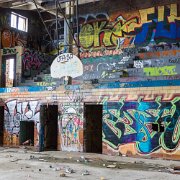
20 The Brewster Recreation Center was built in 1929 to serve the recreational needs of the city's expanding black population. The name was later changed in honor of Leon Wheeler, the first black worker in the Detroit Parks & Recreation department.
At some point in the 90's a basketball court was donated by former NBA star Chris Webber. Along with the surrounding Douglass projects, the center closed in the late 2000's.
A small fire broke out on the second floor of the rec center on July 30th, 2011.
At some point in the 90's a basketball court was donated by former NBA star Chris Webber. Along with the surrounding Douglass projects, the center closed in the late 2000's.
A small fire broke out on the second floor of the rec center on July 30th, 2011.
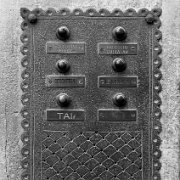
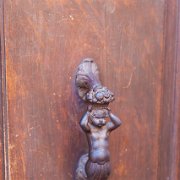

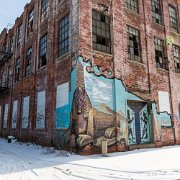

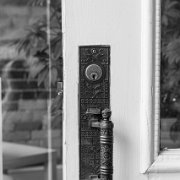
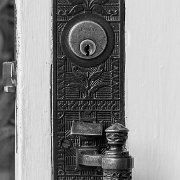
Doors